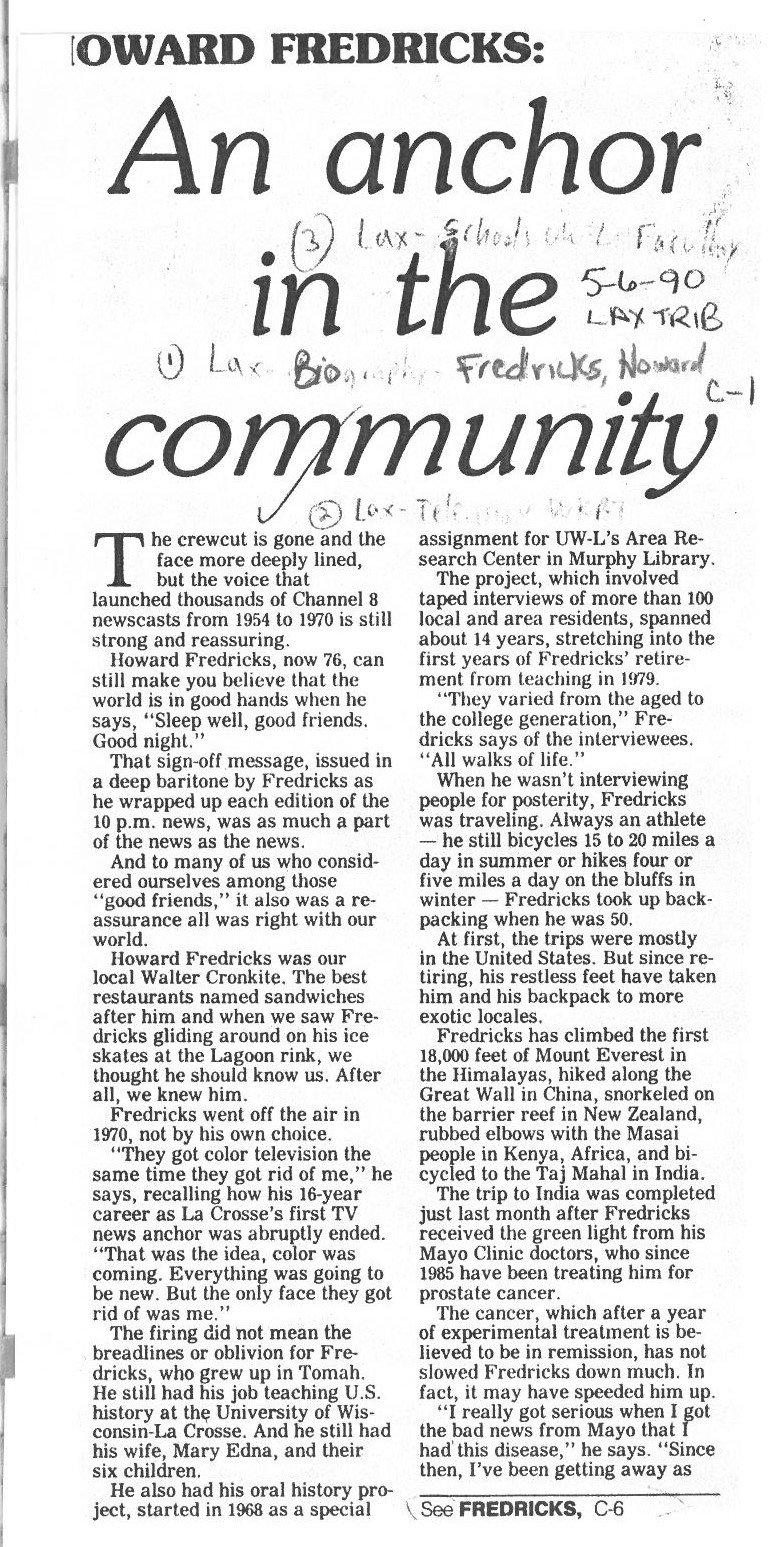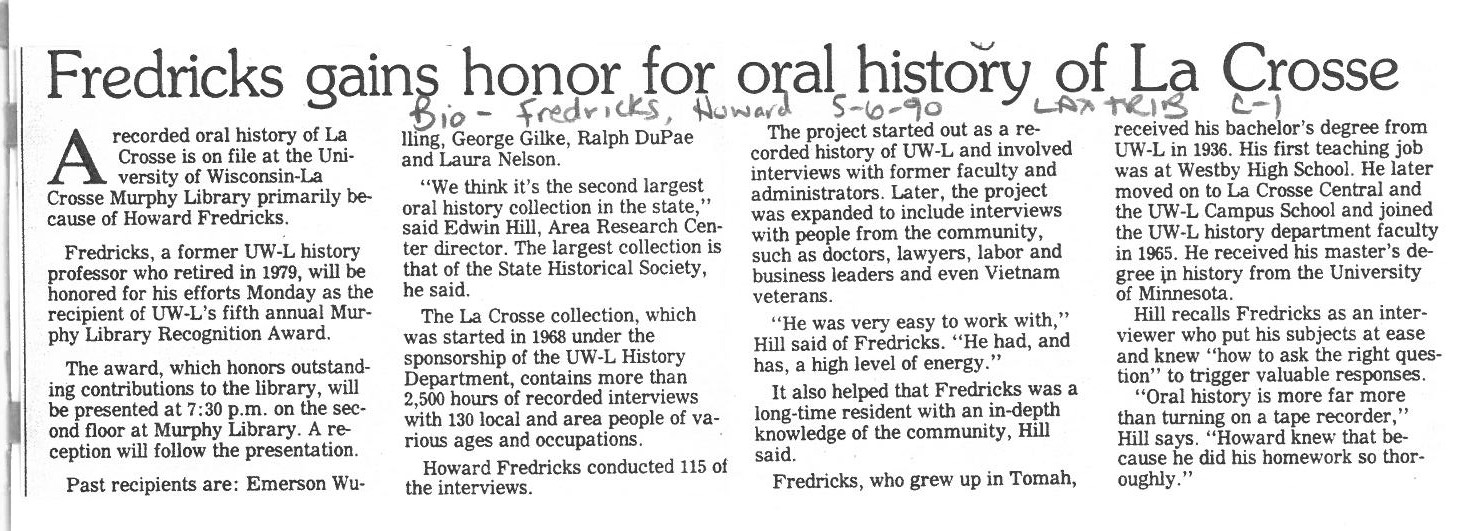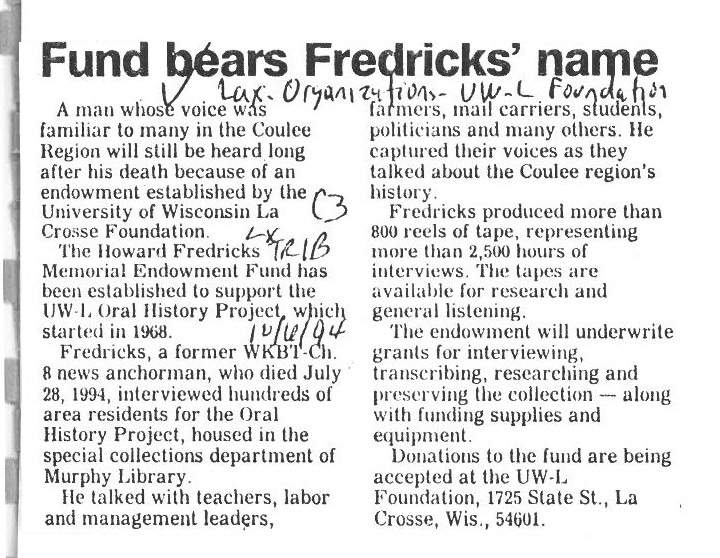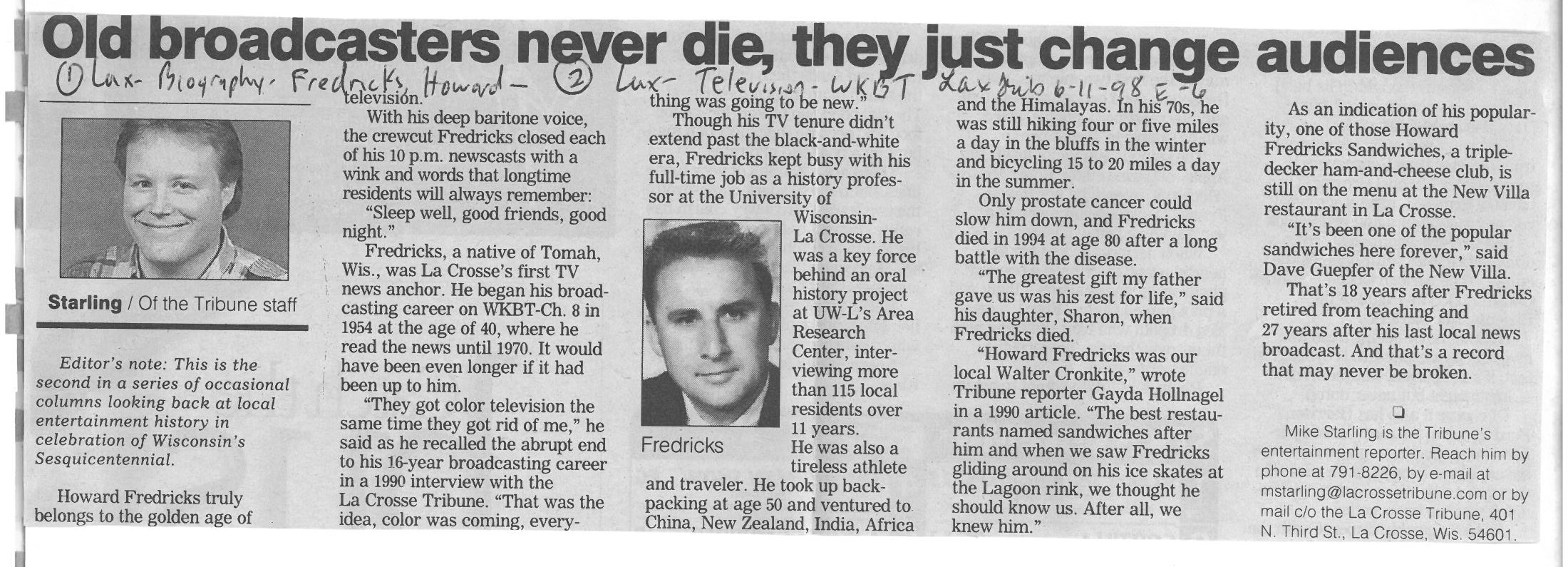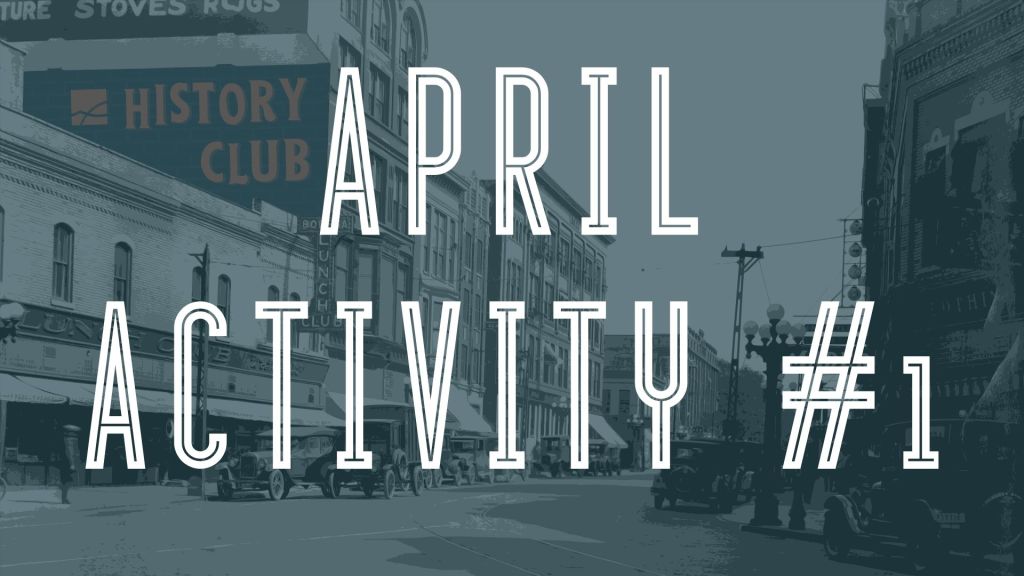
Continuing our conversation from March, this month we’d like to apply the Archives Are Not Neutral concept to the composition and characteristics of UWL’s Oral History Program (OHP) collection. To begin, let’s first look at some statistics of OHP’s collection, and then we’ll dig deeper into, 1) La Crosse demographics, and 2) how the identities of our record creators are connected to this context.
OHP’s collection currently contains approximately 900 oral histories, which were collected between 1968 and 2022. A closer look at statistics related to its composition reveal some significant imbalances within the collection. For example:
- Only .011% of the interviews are in a language other than English. (Hmoob is currently the only other language spoken in OHP interview recordings.)
- Only .0089% of interviewees self-identified as members of the LGBTQ+ community.
- Only .11% of interviewees have ancestry other than Northwestern European. This includes:
- .1% Arab American narrators.
- .033% Hmoob (Hmong) American narrators.
- .0033% African American narrators.
- .0022% Native American narrators.
- OHP currently has no Latinx narrators in its collection.
Contextualizing La Crosse as the Home of Our Local Archival Repositories
When looking at these OHP statistics, it’s easy to see that they generally mirror La Crosse’s demographics during the 20th century. From 1910-1980, La Crosse was majorly white.1 In the 1980s, two immigrant groups arrived in the La Crosse area by the thousands: Cuban refugees who were brought to a federal resettlement camp at Fort McCoy after the Mariel Boatlift Crisis (1980) and Hmoob refugees who resettled in La Crosse after the Vietnam War via church group sponsorship and family ties. By the later part of the 1980s, fears that migration-related demographic change could create a cultural shift in La Crosse led some white residents to respond with acts of racism and violence. Thus in 1987, Viterbo University sociology professor, Dr. Darrell Pofahl, produced a report that offers historical insight into La Crosse’s racial composition in the 20th century.
Page 1 of Pofhal’s report, To Make A Difference, explains the context for La Crosse during the decades when the majority of OHP’s collection was built. So Jenny and Tiffany see this page as useful companion reading to understand the historical roots of OHP’s archival imbalance. We’d like you to read page 1 and consider how the way 20th century La Crosse is characterized might help explain why OHP’s collection has the statistical composition that it does. (If you get curious and want to read more of Pofahl’s report, feel free! For what we’re thinking about in Activity 1 though, page 1 is the key part.)
OHP was established in 1968. So what was La Crosse like in that year? Below are some tables from the 1970 Census that help us envision La Crosse’s demographics as OHP’s interview-collecting was getting underway. The Census tables also help us see how La Crosse related to other Wisconsin communities as the 1970s began.
Contextualizing Howard Fredricks as a Record-Creator
In addition to the community where OHP began, we also want to look into the community member who served as OHP’s first record-creator: oral history interviewer Howard Fredricks. As a history professor at UWL, a news broadcaster, and oral historian Fredricks was able to build connections with community members that offered them a way to preserve their memories and experiences in OHP’s growing archives. So what can we figure out about the circumstances and mindset for OHP’s first record-creator? Luckily the La Crosse Public Library Archives have a collection of newspaper articles about Howard Fredricks’ career. Let’s use them to figure out more about who Howard Fredricks was as a La Crosse community member and record-creator.
Click here to view long article in new tab.
Guiding Questions for Activity #1:
- How should the context for OHP’s collection be described for potential oral history listeners? How do we have these conversations with people simply looking to access certain materials?
- In what ways does the Archives Are Not Neutral concept relate to the context for OHP’s collection?
- How do you see Pofahl’s words resonate in today’s La Crosse?
Footnotes
1The Syrian and Lebanese immigrants who arrived at the turn of the century (1890s-1910s) and their descendants were recorded as “white” by the Census takers throughout the 20th century.

